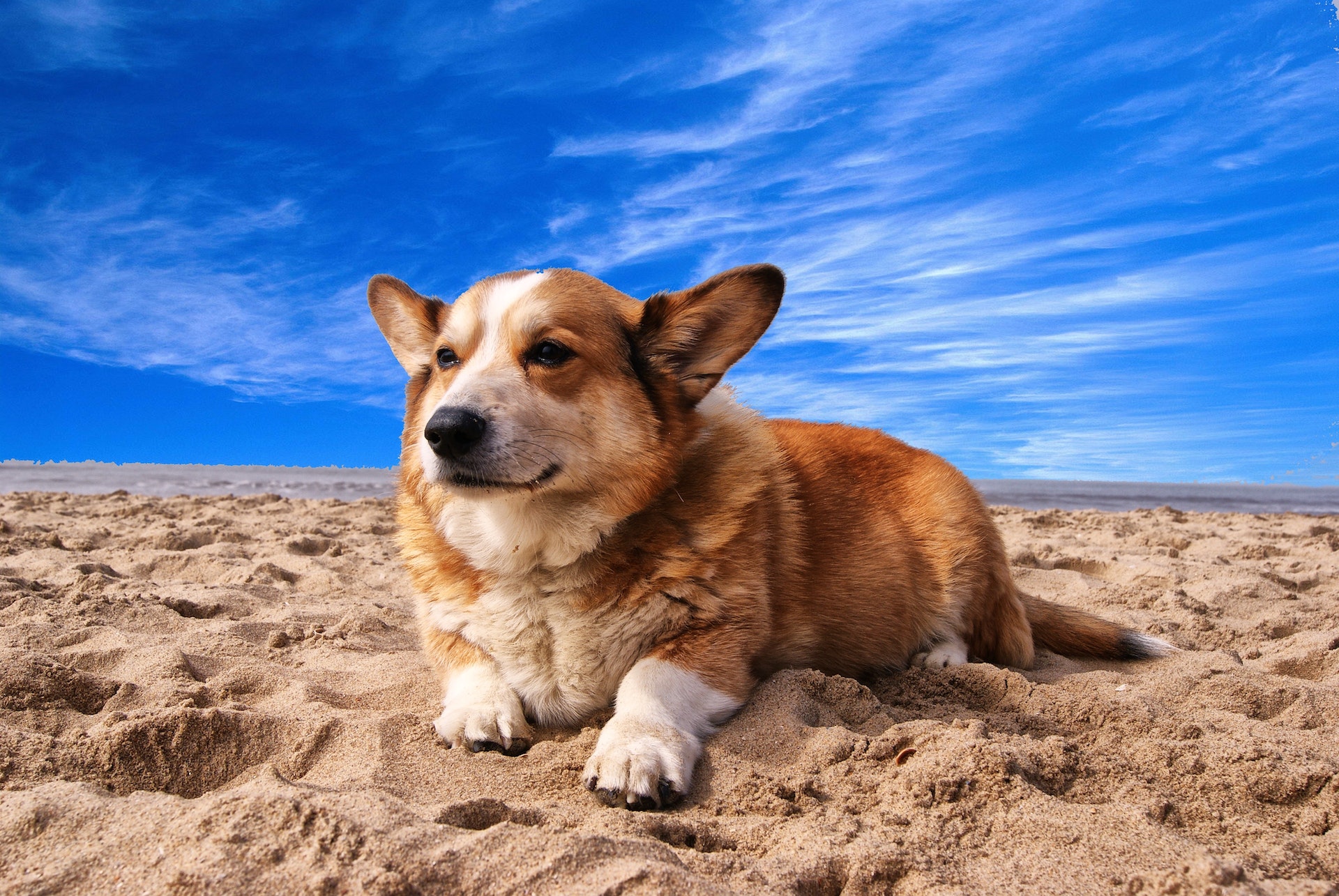Home » Blog » Pet » Pet Health & Safety » How to Keep Your Dog Safe at the Beach
Categories
Tags
animal welfare
breed profile
buying a car
buying a pet
Car
car accessories
car care
car features
car insurance
Car safety
car sales
car service
cat
cat behaviour
cat body language
Cat Breeds
cat food
cat insurance
comprehensive car insurance
Dog
Dog Behaviour
dog body language
Dog Breeds
dog food
Dog Insurance
dog training
eco friendly cars
Kitten
New Car
pet accessories
pet activities
Pet Adoption
pet breeders
pet days of the year
pet fun stuff
Pet Health
pet insurance
pet parenting
Pet Safety
pet services
Puppy
rescue pets
road safety
road trip
safe driving
Recent Blog:
Facebook Posts
2 days ago
Growing old sometimes means we can’t take care of pets anymore. Find out some advice on what to do when this happens:![]()
![]() Senior Pet Parents – Contingency Plans for Your Pet – bit.ly/44bzwkS
... See MoreSee Less
Senior Pet Parents – Contingency Plans for Your Pet – bit.ly/44bzwkS
... See MoreSee Less
Senior Pet Parents' Contingency Plans for Pets
www.pd.com.au
Sometimes senior pet parents need more downtime. For older pet owners, this can be tricky to navigate if their dog or cat is full of beans and wants to4 days ago
Before you rev up the engine, let’s run through a checklist of things to do before starting your car. Not only do these steps ensure your safety (and that of others around you), but they also help in maintaining your vehicle's longevity.![]()
![]() Driving Tips: Your Checklist Before Starting Your Car -
... See MoreSee Less
Driving Tips: Your Checklist Before Starting Your Car -
... See MoreSee Less
Driving Tips: Your Checklist Before Starting Your Car
www.pd.com.au
Heading out for a drive? Hold up a second! Whether you're dashing off to work, running errands, or embarking on a road trip adventure, there are a few1 week ago
Are intestinal worms setting up camp in your dog’s gut without paying rent? Here’s how to spot the main culprits and get rid of them too:![]()
![]() Preventing, Identifying and Treating Intestinal Worms in Dogs - bit.ly/43YjCKu
... See MoreSee Less
Preventing, Identifying and Treating Intestinal Worms in Dogs - bit.ly/43YjCKu
... See MoreSee Less
Preventing, Identifying and Treating Intestinal Worms in Dogs
www.pd.com.au
Intestinal worms, such as roundworms in dogs are one of the least glamorous topics on the planet. These intestinal parasites that basically use our dogsPlan on swimming with your dog at some dog-friendly beaches? In that case, keeping your dog safe at the beach should be a top priority. After all, with all those poisonous sea slugs, blue bottles, dead birds, plants, sand and other things dog love to smell (and taste) there’s a lot worth having on your radar.
Most dogs adore a trip to the beach to go swimming, play frisbee, and sunbathe with their humans. And we love having them there too. In this article PD Insurance unpacks how to keep pooch safe and happy while at the beach!
In this article
Are dogs allowed at the beach?
Yes. In case you weren’t aware, there are plenty of dog-friendly beaches in Australia where you can enjoy some fun in the sun with your pet. However, it’s crucial to follow certain rules and guidelines to ensure a safe and enjoyable experience for everyone.
By everyone, we mean you, your dog, other people, pets and Australian wildlife.
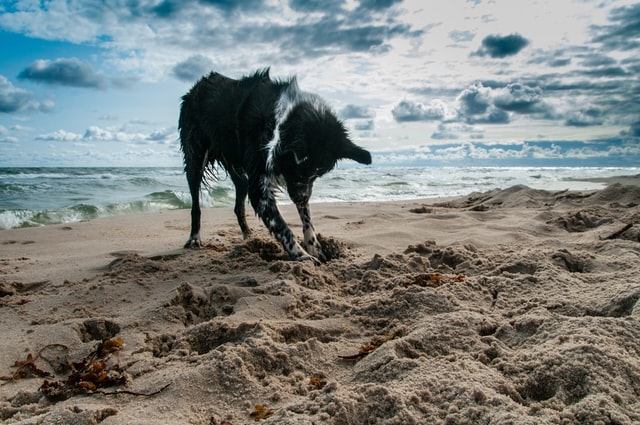
Dog-friendly beaches in Australia
Beach rules can vary between states and councils, so it’s essential to check local regulations before heading out to dog-friendly beaches to go swimming with Fido. Here are some popular dog-friendly beaches across Australia:
- Castaways Beach, Noosa
- Palm Cove Beach, Cairns
- Queens Beach, Scarborough
- Rose Bay Beach, Sydney
- Pambula Beach, Sapphire Coast
- McCauley’s Beach, Wollongong
- St. Kilda West Beach, Melbourne
- Altona Beach, Altona
- Sandridge Beach, Port Melbourne
- O’Sullivan Beach, Adelaide
- Glenelg Beach, Adelaide
- Sandringham Harbour, Hampton
- Mosman Beach, Perth
- Port Beach, Fremantle
- Wharton Beach, Esperance
- Nutgrove Beach, Hobart
- Mickeys Beach, Eggs and Bacon Bay
- Freers Beach, Shearwater
Here’s more about dog friendly beaches in Australia.
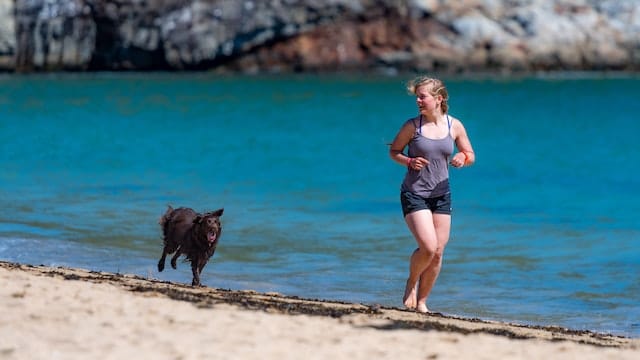
Keep your dog safe at the beach: Common hazards
The last thing you need is an emergency trip to the vet because your golden retriever took it upon himself to retrieve some jellyfish. When will they just stay true to their name and retrieve some gold, anyway?
Just joking – every bit of unconditional dog love is priceless!
Below are some of the key guidelines to follow and health hazards to avoid in the quest to keep your dog safe at the beach. Aside from jellyfish and the obvious hazard of your dog loving the beach and never wanting to come home, that is.
Let’s start with your routine guidelines for dog safety at the beach.
Standard guidelines for taking your dog beach-side
Here are key points you should always be mindful of before getting beachy with your bestie:
- Leash rules: Always abide by leash regulations. Some beaches allow dogs to be off leash during certain hours or in designated areas. Respect these rules to avoid fines and ensure safety.
- Pick up after them: Be a responsible pet owner and clean up after your dog. Bring waste bags and dispose of them properly in designated bins (read more in our puppy poop etiquette article).
- Watch them: Always keep a close eye on your dog. This will help prevent any potential conflicts with other dogs and beachgoers.
- Water safety: Not all dogs are great swimmers, and ocean currents can be unpredictable. Be careful to keep your dog close to you when you’re near the water.
- Hydration and shade: Bring plenty of fresh water for your dog to drink and provide shade for them to rest when the sun is beating a bit too hard.
- Socialisation: Ensure your dog is well-socialised and friendly with other dogs and people before heading to a busy beach.
- Respect wildlife: Be mindful of local wildlife, such as nesting birds or marine life. Keep your dog away from sensitive areas to avoid disturbances.
- Health and vaccinations: Make sure your dog’s vaccinations are up to date before visiting public places like beaches (read more in our pet vaccinations article).
- Follow signs and guidelines: Pay attention to any signs or instructions posted on the beach regarding dog rules and regulations.
By following these rules and respecting the environment and other beachgoers, you can have a fantastic time bonding with your dog and enjoying Australia’s beautiful beaches.
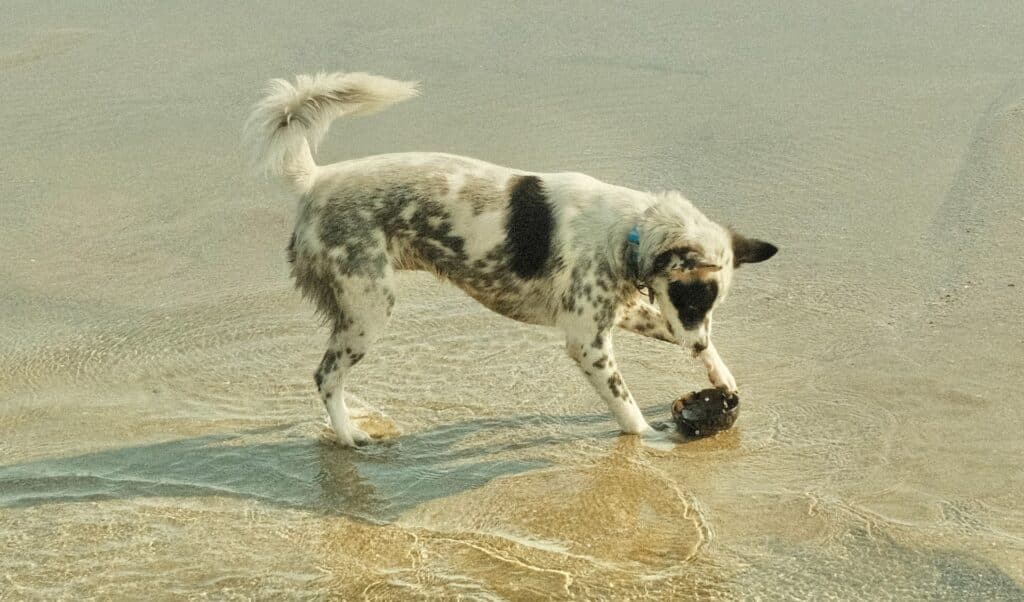
More on heat-related health scares
Keeping your dog safe at the beach means being aware of the weather. If you’re planning on being at the beach for an entire day, check the forecast.
Shade and sunscreen
If it’ll be warm, you need to take some extra precautions for your dog. Make sure you provide water and shade, for a start. Be prepared to leave if it gets too hot for your fur kid as dog sunburn can be a serious health hazard.
Beating the heat
Dogs get heatstroke more easily than humans because they can only sweat around their paws and nose. This means they can’t cool their bodies as easily as we can (consider a pet cooling mat to bring down the heat). Check out the signs of heatstroke and be sure to monitor your dog carefully as heatstroke can be fatal.
Keep your dog hydrated for a safe beach visit
Be sure to bring along fresh, cool water to prevent dehydration. Saltwater will obviously make dehydration worse and can make them sick too. So, pack a bowl and a big bottle or two for your furry friend. Cold water will help them to stay cool in the sun too.
Avoid hot sand and tar
Finally, check the sand temperature. If you’ve ever walked along a beach on a hot day, you’ll know the sand can get unbearably hot sometimes. If it’s hurting your feet, your dogs’ paws are probably burning. Dog booties, maybe?
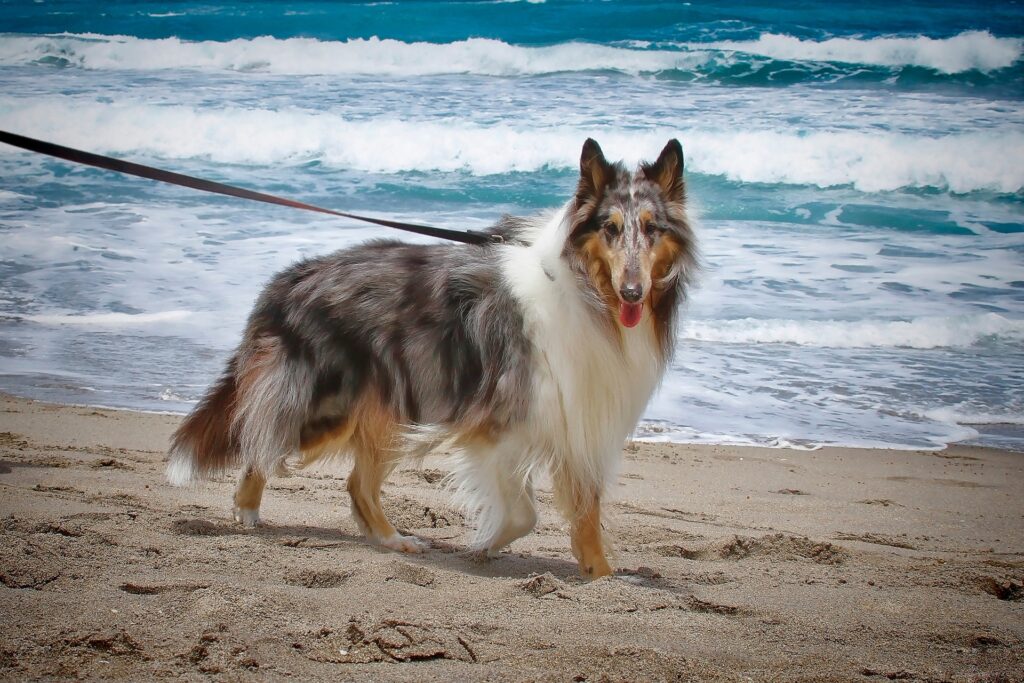
Keeping your dog safe in the water at the beach
It goes without saying that keeping your dog safe in the ocean is one of the main priorities when taking a dog to the beach. Some dogs won’t actually go swimming but if you’ve got a water-loving dog then you need to keep a close eye on them.
You’ll want to choose waters that are calm and quiet. That goes for waves and currents as well as general activity – jet skis, boats and surfboards can sometimes be frightening for dogs!
Before going to a dog-friendly beach, make sure your pooch has tested out some basic dog swimming skills. People sometimes think swimming comes naturally to dogs, but that isn’t necessarily true. Dog pool training can be a good way to achieve this.
Even if they hate water and even if you’re not planning on letting them get in the ocean, accidents can happen. Your dog needs to be able to swim if you want to take them to the beach.
Regardless, we’d suggest investing in a dog life jacket if you’re planning on spending a lot of time in and around the water.
Sand ingestion
Dogs love to dig in the sand at the beach. Normally, that’s as far as it goes. Some of them get a bit of a taste for the sand though…and, yep, they eat it. But the most common cause of sand ingestion is dogs grabbing toys from the water.
Often, they’ll accidentally scoop up and swallow some sand as they fetch the toy. In small amounts this isn’t necessarily a problem; however, a build-up of sand can cause an impaction.
Initially, they may seem fine, but sand impaction can cause blockages in the abdominal system. This will cause abdominal pain and needs urgent treatment to help pass the blockage. Signs and symptoms of sand impaction may include:
- Vomiting
- Constipation
- Lethargy
- Dehydration
Keep an eye on your dog to make sure they aren’t eating sand and check they’re drinking enough water – during and after the beach visit – to help keep the gut moving.
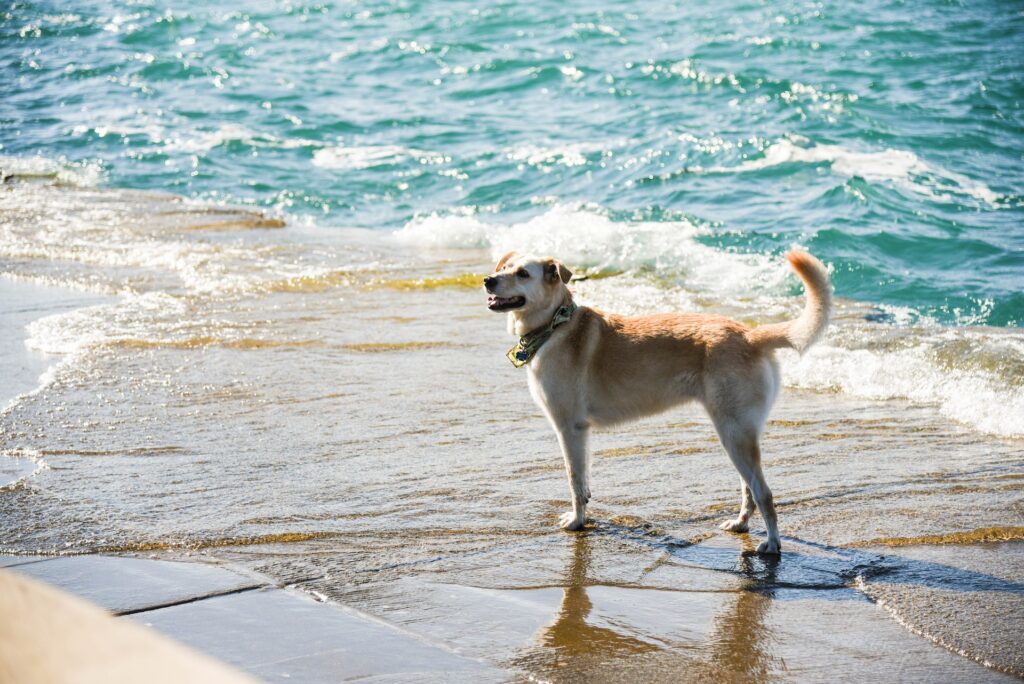
Sea creatures are for watching, not eating!
Some dogs eat anything.
A common hazard when it comes to marine life at the beach is the infamous blue bottle. If your dog gets hold of one, they could experience painful stings, swelling, and breathing difficulties.
Be mindful of your dog trying to eat any washed-up fish too. It could be a blow fish or puffer fish, which dogs have been known to swallow whole. If your dog eats either of these, they require urgent veterinary treatment. Get them there before any symptoms develop as these cases become deadly very quickly.
Dead birds washed up or otherwise also pose a risk, as do other decomposing beachy bits. Remember that for all animal poisoning queries, you can give the Animal Poisons Helpline a ring at 1300 869 738.
More top dog reading
To make sure you and your dog have a fun, safe beach trip, check out these blog posts too:
- Top Tips for Pet Water Safety at the Beach, River or Lake
- Paws and Listen: Tips for Travelling with Pets
- Pet Friendly Accommodation for Your WA Road Trip
- Can Your Pup Get Sunburn? What You Need to Know
- Hot, Hot, Hot! How To Keep Your Dog Cool This Summer
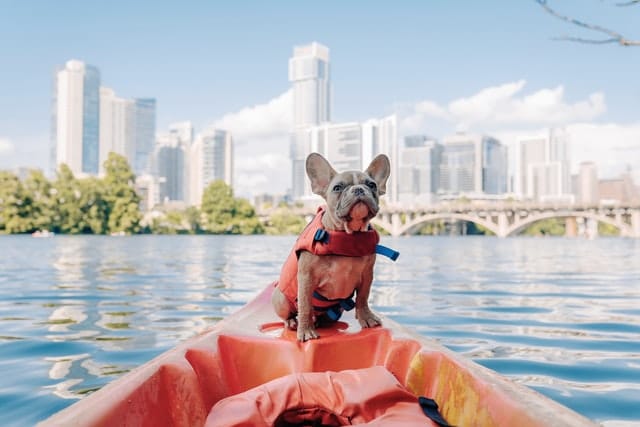
One more note: Microchips are a necessity
Should the worst happen and your dog takes off down the beach or gets lost, a microchip could be a lifesaver. If anyone finds your dog, they’re likely to take them to a vet or animal shelter. The first thing they’ll do is scan for a microchip. If your dog has one, you’ll be easily reunited. If not, the search will be much harder and longer.
Microchipping is quick and inexpensive. Chipping is one of the best investments you’ll make for the safety of your pet and for your own peace of mind. Dog insurance is another one of those investments, by the way.
Pet insurance can help if your beach trip goes wrong
If there’s an accident involving your fur kid on one of Australia’s dog friendly beaches, our award winning pet insurance means you can seek veterinary treatment without worrying about the cost.
Our 3 simple pet health cover plans have the low cost, high quality protection your furry family deserves. You can go to any vet and upgrade or downgrade your plan with no lock-in contract.
Hey, sometimes the little rascals just can’t help investigating the local marine life or snatching someone’s chocolate ice cream! Thankfully, with your pet plan in place, you’ll be able to visit dog a friendly beach knowing you’ve got the best safeguard in place.
Buy an online pet plan with PD Insurance and you’ll get one or more months of FREE pet insurance.
Share On:

